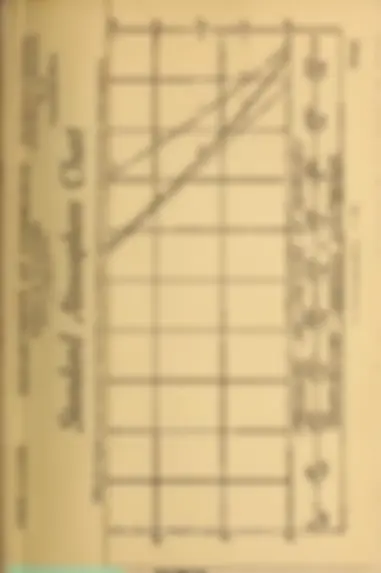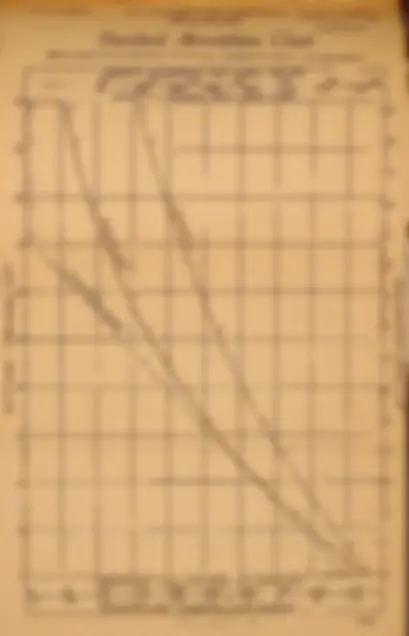








Study with the several resources on Docsity

Earn points by helping other students or get them with a premium plan


Prepare for your exams
Study with the several resources on Docsity

Earn points to download
Earn points by helping other students or get them with a premium plan
Community
Ask the community for help and clear up your study doubts
Discover the best universities in your country according to Docsity users
Free resources
Download our free guides on studying techniques, anxiety management strategies, and thesis advice from Docsity tutors
An overview of the standard atmosphere concept in aeronautics, its importance in evaluating airplane performance and calibrating instruments, and the official adoption by various US government organizations. The document also includes the formulas defining the United States standard atmosphere.
What you will learn
Typology: Slides
1 / 10

This page cannot be seen from the preview
Don't miss anything!







In aeronautics a standard atmosphere^ is^ an assumed condition of the atmosphere which is defined by an altitude- temperature-pressure relation. The chief difference anions the various atmospheres which have been proposed lies in the selection of the
phere is an aeronautic^ necessity in evaluating the performance of airplanes and for the calibration of instruments. For example, the performance of an airplane, (^) such as its rate of climb or ceiling, in order
to be comparable with that of other machines is stated in terms of altitudes which correspond (^) to the same standard conditions of (^) ail* temperature, pressure, and density. Further, (^) altimeters are pressure-measuring instruments (^) graduated in terms of altitude according (^) to the altitude-pressure relation of a standard atmosphere. Air-speed indicators are calibrated (^) to indicate true air speed at a standard
air density. The results of wind-tunnel investiga- tions are also reduced to a standard (^) density of air. A standard atmosphere has been (^) officially adopted for use in the United States (^) for the above and other aeronautic (^) purposes by the following Government
organizations: Army Air Corps, Bureau of Stand- ards, National Advisory Committee for Aero- nautics, Navy Bureau of Aeronautics, and the Weather Bureau. This atmosphere (^) is now in general (^) use throughout (^) the United States in aero-
nautics except in the evaluation of the altitude of llights (^) made to (^) break international (^) records, in which
case the Federation Aei'onautique Internationale standard atmosphere is the basis of comparison. The altitude-temperature assumption of the United States standard is a slight modification of that
propped \jj Toudsal.-l and closely u^rtxiiuaiw
the average observed values of air temperature at all altitudes at latitude 40°^ in the United States. The formulas defining the United States standard atmosphere are given below.
(a) For all standard altitudes
P Ta P=P
T,, =^ 288° absolute =^ 15°^ C.
2>„ =^760 mm^ of^ Hg^ =^ 29.921^ in.^ of^ Hg.
K= 19,413.3 for Z in meters. = (^) G3,691.S for Z in feet.
p =^ 1.2255^ for^ p^ in^ kg/nv'. = (^) 0.07651 for pin lbs./ ft. 3
(1)
(2)
MOSPHERi-
Phyiidit
(b) Up to the isothermal layer (^) (below
(4)
~aZ
for Z in (^) meters. = (^) 0.0019812 for Z (^) in feet,
(c) At (^) the lower limit of the (^) isothermal layer
(10,769 m)
T=218° (^) absoIute= -55° (^) C.
ZS5 =35,332 feet = (^) 10,769 meters. 7'„ (^) 5S = 251.378 (^) absolute.
In the isothermal (^) layer (above (^) 10,769 m) r=21S° (^) absoluto= -55° (^) C.
(a!)
Tma 218
In the above formulas
Z =^ Standard altitude.
Z 55 = Altitude at tho lower limit (^) of i isothermal layer.
altitude (^) Z.
To =^ Standard sea-level temperature degrees absolute.
!T„ = Mean temperature (^) of the air colut
7SS =^ iMoan^ temperature^ it lute for Zss.
p =^ Pressure^ of^ the^ air^ at^ altitude^ Z.
2>o =^ Standard^ sea-level^ pressure.
P =^ Density^ of^ the^ air^ at^ altitude^ Z.
p =^ Staiidard^ density^ at^ sea^ level.
Absolute temperatures are ecpual to centigrade (^) tem- peratures plus 273. (^) p is in the same unit of (^) pres-
Tho chart on the reverse of this card (^) gives the
temperature, pressure,^ and^ density^ for standard altitudes up to 50,000 feet. A brief table of the values of these quantities is given below. See Na- tional Advisory Committee for Aeronautics Techni- cal Reports Nos. 147, 218, and 246 of the committee for further data and complete tables.
Standard Atmosphere Table
Meters Feet mm Hg in Hg kg/m> Lbs./ft.'
3281
9842
16404
1120 0068
. 9094
26247 29528 32808
. 5896 . 5252 4664 .
3614
. 3090 2642 2250 1931 . 02256 . 01929 . 01649 . 01410
30000 35000 40000 45000 50000
. i ;^ s; 3705 2oos. 01872 . 01474 . 01161